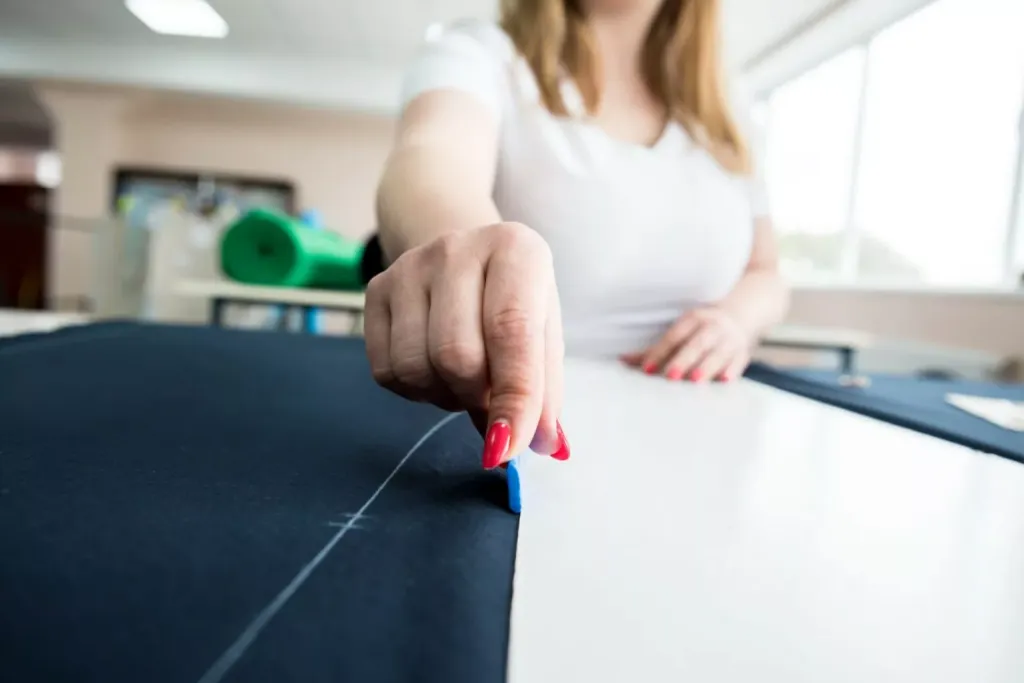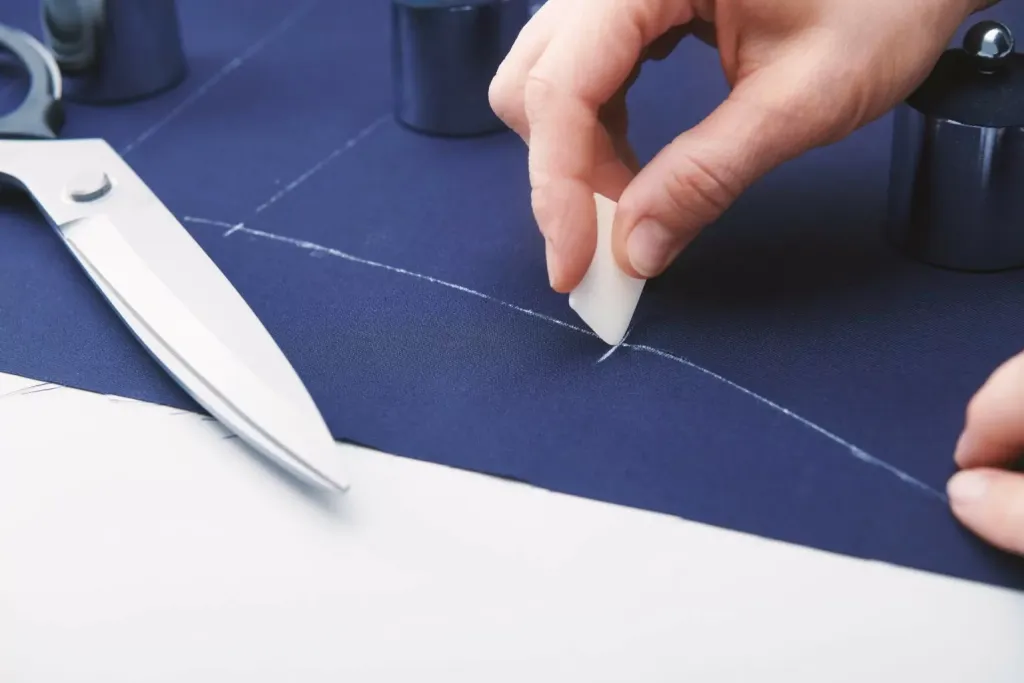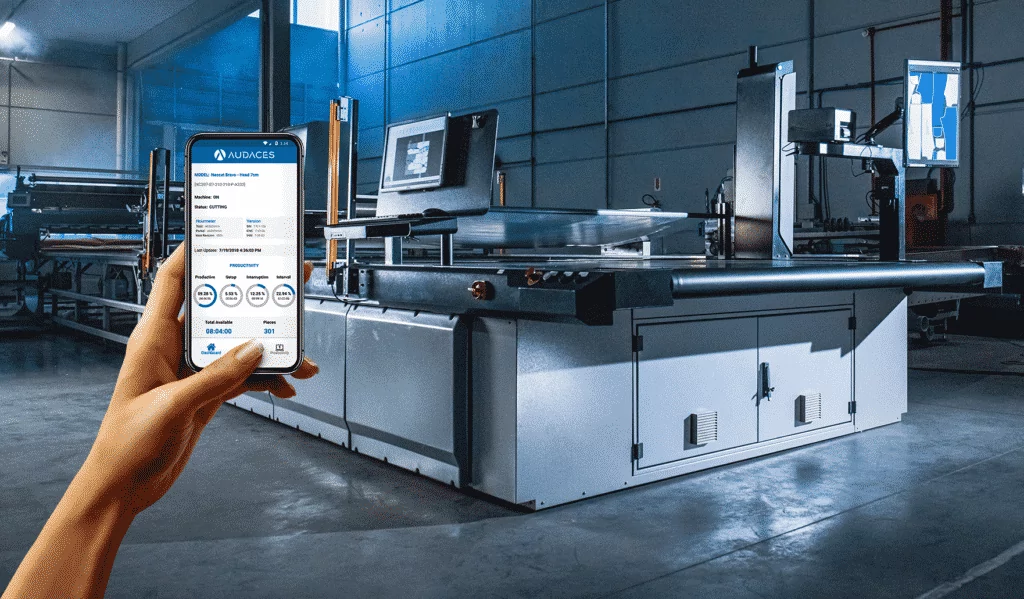Summary
- Carrying out automatic fabric spreading requires precision and preparation;
- There are various methods of fabric spreading. Therefore, whoever performs this activity needs to know how to do them properly;
- Unlock the power of technology to boost your production. Try the Audaces360 multi-solution for free and find out how!

Lay the fabric in layers and cut it precisely. Sounds simple, doesn’t it? But automatic fabric spreading requires a great deal of attention.
The preparation of the layers is important is essential to ensure a successful cutting and sewing of a garment.
Once this is done, your fashion business tends to have greater agility and improved time management for its processes.
Want to understand how automatic fabric spreading can directly affect your production – and how it can improve your performance?
Sumário
Stay with us and read on!
What is fabric spread?
Automatic fabric spreading is the act of folding the fabric in half so that it goes through the cutting process.
It’s an essential part of the garment-making process that involves unfolding large rolls of fabric and laying them out across a wide table in preparation for cutting each piece of clothing.
Depending on the number of items to be cut and the thickness of the fabric, this can involve arranging and passing multiple layers of fabric through the cutting machine. In practice, the professional places the fabric in layers and passes it through the layer to be cut simultaneously.
It is essential that the layers are laid out flat and aligned properly to ensure the best possible use of the material.
Additionally, it is important to be aware of the type of fabric being spread. This is because there are guidelines for specific threads and fabrics, to make the most out of the material:
What are the types of fabric spread?
“So, all I have to do is laying the fabrics on top of each other and cut?”, you might be wondering. The answer is no!
Discovering the different fabric spreads and how to use them is essential for your business.
They are divided into three main types: zigzag, nap one way/face one way, and nap one way/face to face.
Each one has its own advantages, so it is important to understand each one to make sure you are using the best technique for the specific needs of your company.
Find out more about them:
Face-to-face in both directions or ‘zig-zag’
The zigzag spread offers a dynamic approach to laying the fabric out, allowing for two parts of the piece, left and right, to be processed at a faster rate.
In this method, also known as ‘face-to-face in both directions, the fabric can be spread without cutting from one end to the other, in one continuous motion based on the marker length.
Nap one-way, face one way
This type is used for asymmetrical cuts.
It starts with extending the first sheet of the fabric, then the next sheet at the beginning of the table. After a ply is laid out, it is cut across its width from the roll of cloth. For this reason, this technique produces one piece at a time.
Nap one-way, face-to-face
When dealing with fabrics that are smoother and tend to slide more, the nap one-way, the face-to-face spread is employed.
This spread involves folding the fabric at the end of each ply and proceeding in the opposite direction.
Since the two similar faces of the fabric shall be placed against each other, the fabric must be symmetric so that the appearance does not change upon 180° rotation.
Learn more: Find out how – and why – to apply textile automation in your company
What is the importance of accurate fabric spreading?

Accurate fabric spreading is made with good preparation. For this reason, the whole process must be done with care and focus.
To ensure success, the person responsible for the spread must be knowledgeable of the exact requirements of each fabric type, as well as following the manufacturer’s guidelines correctly.
Additionally, during the automatic fabric spreading, it is necessary to identify the orientation of the thread and the alignment of selvedges. Thus, it is possible to detect in advance possible fabric defects before they reach the cutting and sewing stages.
By taking these steps, companies can ensure that their fabrics are of the highest quality.
What precautions are needed for adequate fabric spread?
When layering fabric on a cutting table, it must be perfectly horizontal and include 10% extra space for handling the cutting machines.
A failure in this process may result in pieces cut inaccurately, leading to troubles down the production line.
To avoid such mistakes, take a look at the below tips for a successful fabric spreading:
Align the fabric correctly
Ensure the edges of fabric are perfectly aligned for the best results when cutting. If it is not possible, make sure at least one side of the selvedge is aligned properly.
Avoid overstretching
When spreading out the fabric, take care to adjust the tension of the fabric so that no air bubbles appear between layers. This will ensure the fabric is cut without distortions.
Cut only the essential
By cutting only what is needed, you reduce greater – and unnecessary – consumption of fabric, controlling waste and optimizing raw material.
Let the fabric rest after the spreading
Take the time to let the fabric rest for several hours after spreading it out. Thus, the pieces that have already been cut do not shrink, guaranteeing the fabric’s final size is the same as the pattern.
Identify any defects in the fabric
Through the spreading, when extending the fabric, check for any flaws or defects that could be present. Make sure to mark down where these defects are located to easily recognize them when cutting.
Main trace methods in fabric spreading

Trace methods play an essential role in the fabric spreading process. These techniques are typically divided into two distinct types: manual trace and automated trace.
Manual trace
This type of trace is executed directly on the last sheet of fabric, contouring the patterns using. It is a little-used method nowadays.
This method involves directly drawing the patterns onto the fabric’s last sheet, using chalk marking. This method is rarely used nowadays.
Some of its main disadvantages are:
- Slow execution;
- Lack of permanent chalk marks;
- Fabrics with elastane deform the trace;
- Does not allow copies.
Automated trace
The more widely used trace method is automated trace. In this process, after completing the fitting on the monitor, the operator instructs the system to draw the trace in regular size, on specific paper, with the aid of a of a machine.
Fitting with greater agility and precision, in addition to ensuring better use of fabric, the process results in savings and quality in the final piece.
This technique offers greater agility, accuracy, and better fabric utilization, resulting in savings and improved quality in the finished product.
Learn more: How does technology in fashion impact the textile industry?
The most common fabric spreading methods
There are a variety of techniques for fabricating your garments, and your business can select the one that is most suitable for your manufacturing process.
In this sense, it is worth remembering of the power of technology to maximize time and speed up the delivery process of your company.
Discover the fabric spreading methods and their particularities.
Manual
Done without any specialized equipment, two professionals manually pull the fabric, sheet by sheet, and lay it out on the cutting table.
It is a laborious process and of subpar quality, especially for knitters, where there are serious issues with stretching.
Manual support
The unwinder is a stationary fixture on the table that offers minimal advantages over the first approach, apart from the decrease in labor.
Manual trolley with selvedge aligner
In this system, the fabric roll is placed on a platform that runs through the layers. It is much better than the previous one, reducing bottlenecks in material stretching.
Automatic trolley with part cutter and selvedge aligner
Used for large and lengthy spreads, its speed can range from 20 to 60 minutes. It also has the advantage of reducing waste at the ends compared to the previous method, saving fabric.
How to prepare an automatic fabric spreading with the help of Audaces?

Fashion companies with a forward-thinking approach know that embracing technology is essential to staying ahead in the market.
Audaces provides cutting-edge software and equipment to enhance the productivity of your company.
Find out how Audaces can help you propel your clothing industry into the future of Industry 4.0.
Cutting Room
Cutting Room 4.0 combines machinery with intelligent software. They work together to execute your business processes in an agile, precise, and efficient way.
The technologies applied in Industry 4.0 guarantee autonomy to perform tasks accurately, while skilled professionals add their expertise to ensure maximum production efficiency.
The Cutting Room encompasses four distinct stages, namely:
- Fabric spread preparation: where the fabric is readied for spreading;
- Laying: the fabric is laid out on the table and appropriate alignment is made for cutting;
- Cutting: when the fabric is cut according cutting plans;
- Discarding and packages: the process that keeps the production going.
Audaces Linea
Audaces Linea is an automated fabric spreader that is part of Audaces Cutting Room 4.0. It offers remarkable productivity gains over similar devices, allowing you to program multiple spreads for the same day with just a few clicks.
This machine has innovative technology, which allows your company to have a more dynamic, autonomous production with high-quality standards.
Check out some benefits of Audaces Linea:
- Parameterized tensioning control;
- AI-powered layer quality control;
- High performance for several types of layers;
- Low maintenance cost and specialized technical support.
In addition to the Cutting Room and Audaces Linea, you can rely on other Audaces solutions, which integrates and automates your company’s entire production line.
Would you like to know more about the advantages that an automatic fabric spreader can offer your business? Our sales experts at Audaces are ready to answer all your questions!
Download our free e-book now and learn more everything about fashion tailoring and how our solutions can help your company clothing!
FAQ
Automatic fabric spreading is the process of folding the fabric in two halves that enables it to pass through the cutting process.
Fabric spreading can be divided into three main categories: zigzag, nap one way/face one way, and nap one way/face to face.
To ensure successful fabric spreading, it is important to properly align the fabric, avoid overstretching it, cut only what is necessary, give the fabric time to rest after layering and mark any irregularities in the fabric.










